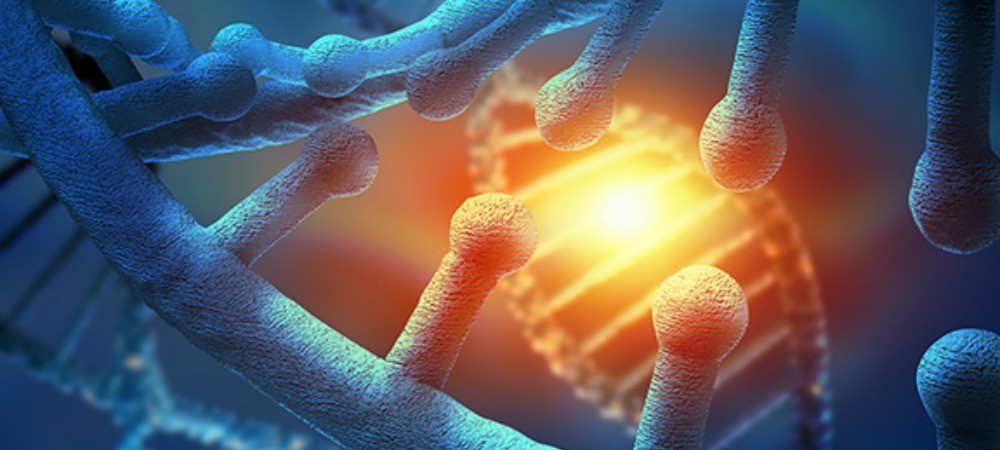The Future of Cancer Treatment

Cutting-edge technologies that will revolutionise the future of cancer treatment
From tiny DNA ‘Trojan horses’ that sneak drugs inside cancer cells to wafer-thin microchips that can perform genetic tests, new technologies are set to radically transform and improve the way cancer is treated. Here are some of the latest developments.
DNA cages
A primary goal of current research on cancer treatment is to devise innovative systems that can deliver desired amounts of an anti-tumour drug exactly where needed in the body.
This is key to optimising treatment effectiveness and reduce the risk of side effects.
One of such systems is being developed at the University of Boston, Massachusetts. It consists of microscopic cages, about 20 nanometres in size, made of strands of DNA.
These tiny cages can hide a drug in their centre, and ‘smuggle’ it inside cancer cells. In the presence of ultraviolet light, the cages disintegrate releasing the drug.
Recent work by John Byrd and colleagues, of Ohio State University, Ohio, has demonstrated that DNA cages can effectively kill cells of acute myeloid leukaemia (AML) that had become resistant to a commonly used chemotherapy drug.
Leukaemia is a type of blood cancer. The researchers had assembled the cages in just 10 minutes, and had loaded them with exactly the same drug AML cells had become resistant to.

Nanoparticle technology
A team led by Andrew Miller, a visiting professor at King College, London, is using nanoparticles in combination with focused ultrasound to deliver drugs to target tumours more effectively.
Nanoparticles are ultrafine material ranging from 1 to 100 nanometres in size.
They can be natural or man-made. Those created by Miller and his team are made of several layers, including one that contains an anticancer drug, and can recognise and bind specifically to tumour tissue.
The new technology, which has recently been presented at the 4th Nano World Cancer Day, in London, employs focused ultrasound (a type of cancer treatment that uses sound waves) to increase the temperature inside the tumour to approximately 40 oC. This makes the tumour’s blood vessels more porous.
As a result, the nanoparticles and their drug load can more easily enter and concentrate in the tumour.
In another project, by researchers of the Niels Bohr Institute of the University of Copenhagen, Denmark, a particular type of particles called plasmonic nanoparticles are injected directly into the tumour and then irradiated, from the outside, with laser light. The nanoparticles quickly convert the light into heat, and become “cancer killing agents,” say the researchers.
They explain in the journal Scientific Reports that “the temperatures generated upon laser irradiation… are so extreme that nearby cancer cells immediately [die] or become irreversibly damaged.” But the surrounding tissue “is left unharmed.”
MRI-guided gene therapy
Neurosurgeons at the University of California, San Diego (UCSD) are investigating a novel approach to deliver gene therapy more effectively inside a type of brain tumour called glioblastoma. They have developed, in particular, a gene therapy drug called Toca 511, and use magnetic resonance imaging (MRI) while injecting it into the brain, to ensure it is delivered to the right area.
Once inside the tumour cells, Toca 511 behaves like a virus and replicates itself. The patient is then given an oral anticancer drug called Toca FC. When this comes into contact with Toca 511 in the cancer cells, the latter die.
In a press release, lead researcher Santosh Kesari said: “Inevitably, almost all glioblastoma patients fail currently available therapy. The challenge, in part, is knowing if current drugs are actually penetrating the tumor. This MRI-guided approach will help us deliver th[e] drug into the tumor directly to see if [it] is working.”
Kesar and his team will soon test Toca 511 within a clinical trial that will look at the efficacy and safety of MRI-guided gene therapy in several types of cancers, including that of the breast, lung, intestine, kidneys and pancreas. The trial is currently recruiting patients.
Lab-on-a-chip systems
Pioneering research is being conducted also on a non-invasive method that can rapidly identify genetic cancer mutations from a small amount of blood applied to a wafer-thin microchip.
Among other things, lab-on-a-chip technology could be used to determine whether a woman with cancer in one breast carries a BRCA1 or BRCA2 gene mutation, and may therefore benefit from having her healthy breast also removed, to reduce her risk of the disease returning.
BRCA1 or BRCA2 mutations increase the likelihood of having breast cancer.
But removing the breasts can potentially reduce this risk. A lab-on-a-chip test, carried out in a doctor’s office, would quickly tell whether the mutations are present, enabling patients to make timely decisions.
Presently, genetic testing results may take up to several weeks to process, resulting in treatment delays, which may negatively impact on patient outcomes. According to research published in Personalized Medicine, over 90 percent of doctors would use lab-on-a-chip technology routinely in their office.
Alivia Cancer Second Opinion Service
Through our innovative second opinion service, we can help you get access to the most exciting new ovarian cancer treatments and find the most decorated and highly specialised cancer surgeons and oncologists in the world to review your illness.




